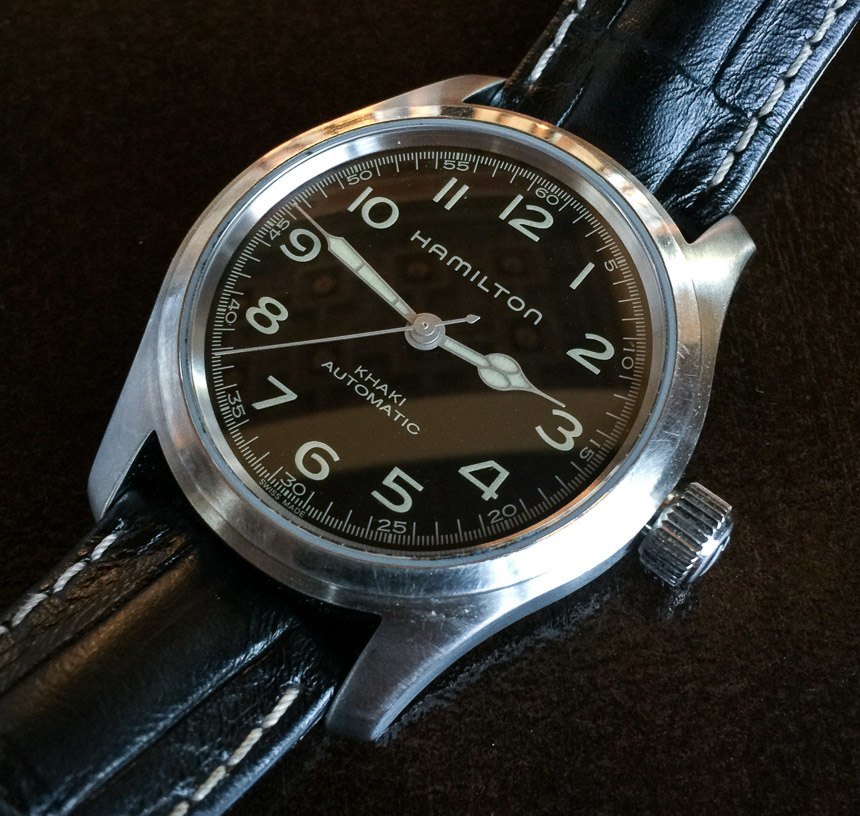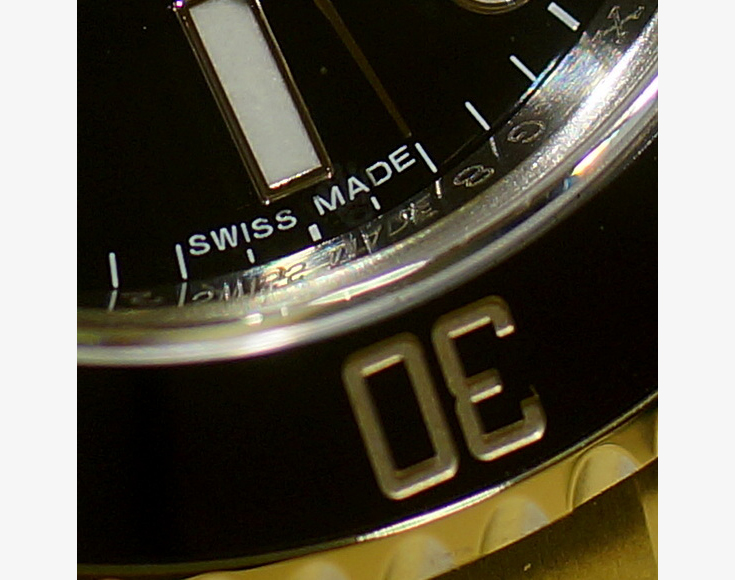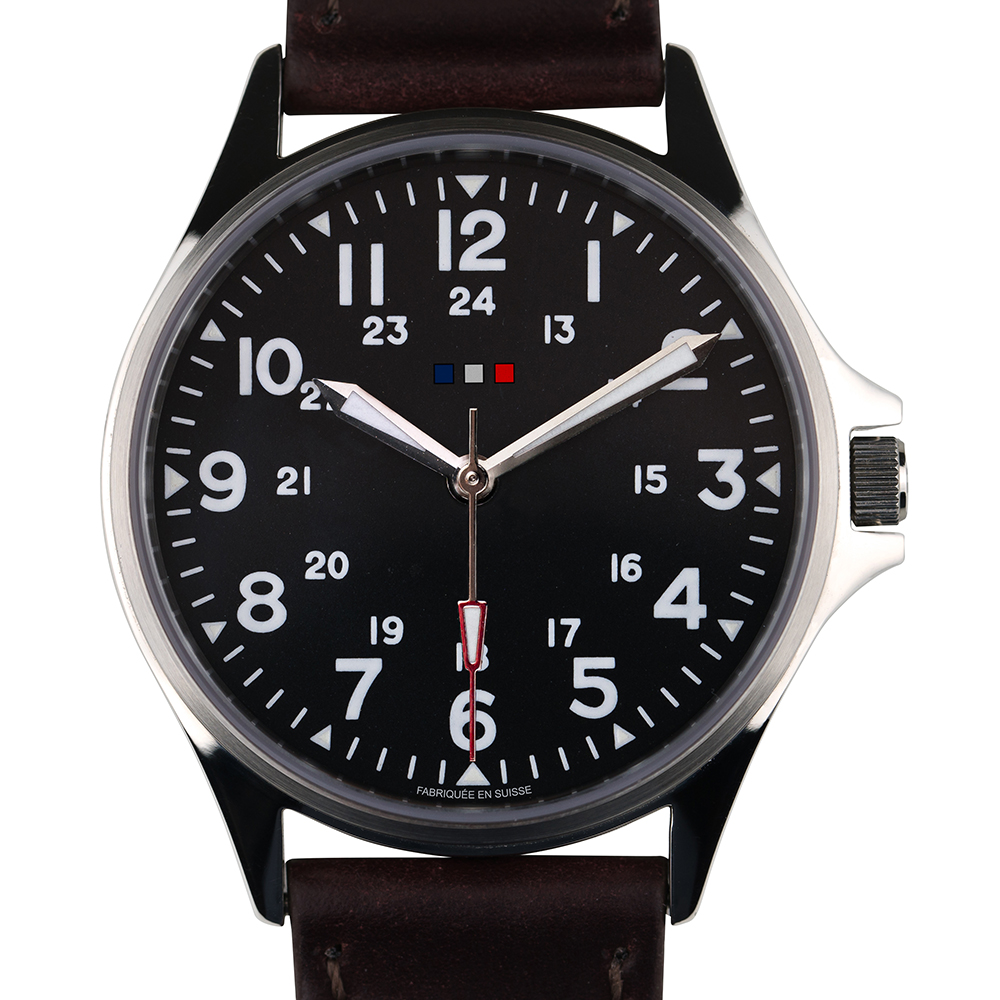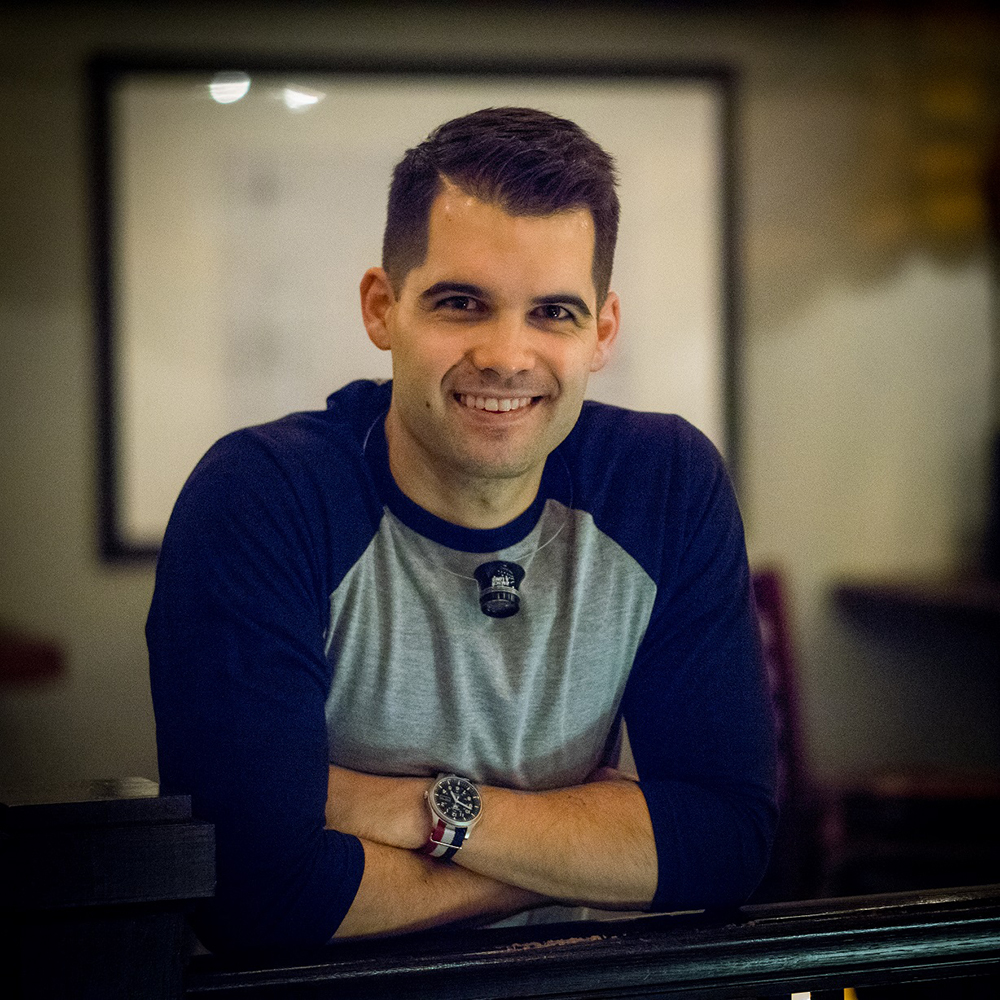
Howdy y’all! If you’re asking yourself, “Who is this guy, what happened to James and Ariel, and what the heck does ‘howdy’ mean?” …then I’m way ahead of you.
I’ll start with the basics. My name is David Vaucher, and I’m French by upbringing, but thanks to one of my dad’s work transfers decades ago, I now live in Houston, Texas, where howdy is a common greeting.
Now that that’s cleared up for you, here is why a lone management consultant in oil & gas from a city with zero horological pedigree has something to offer the readers of aBlogtoWatch: I’m launching attainable watches, made completely by the best Swiss suppliers I can find for the money, and I’m sharing the adventure with you – as Ariel advised I should, given that the process isn’t easy, but seems to be a common dream among like-minded watch guys.
In all my research, I’ve come across vague accounts of how to launch a timepiece (“I couldn’t find the watch I wanted so I designed my own”), but in nitty-gritty, here-is-how-I-did-it detail, there is nothing.
Having had an article published here on aBlogtoWatch in June, I dropped Ariel a line recently. We both agreed this could be something that readers would find compelling since there’s really nothing out there like what we’re about to share with you.
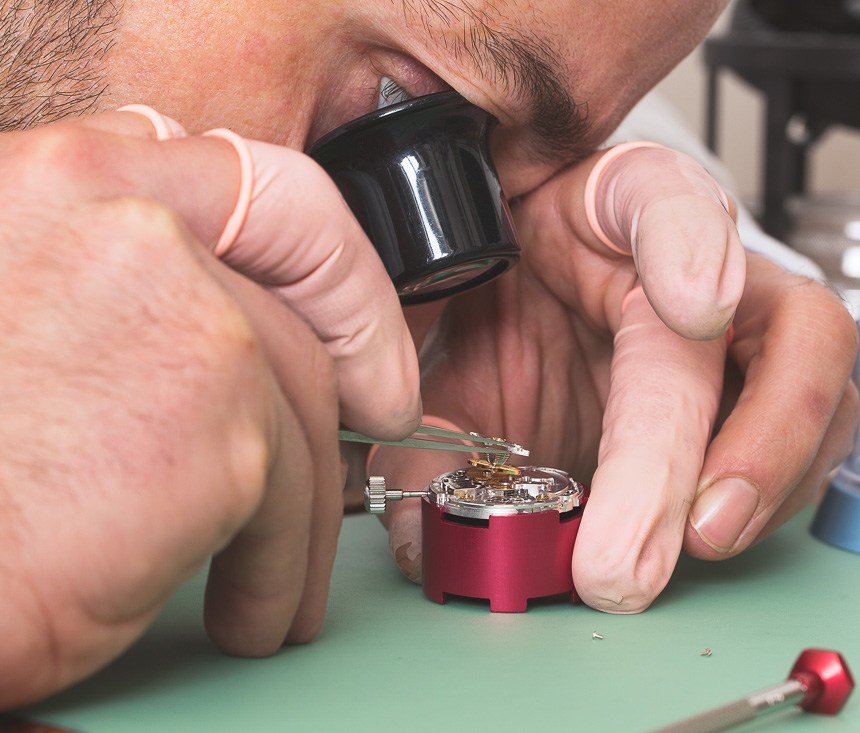
Seeing pictures like this one over my years as a reader of aBlogtoWatch provided the kindling for this project and my desire to pursue it.
I want to state clearly here that this watch project is more than a pie-in-the-sky idea: I have suppliers lined up for everything required, I have production lead-time estimates, and I’m taking pre-orders. It is from this state of progress and Ariel’s knowledge of what the aBlogtoWatch readers would find interesting that these articles will take shape.
I believe strongly that if I can be good to people, help them or show them something interesting, they will respond with support, so it was obvious to me very early on that I would share very large parts of my work. There’s always a chance that I may help a competitor coming up behind me, but more than likely I’m just contributing information to the watch community, which has the freedom to pore over and debate it as they see fit.
Now, before I go into specifics, I want to anchor your thoughts by presenting the “road map” for this first article in the series.
- First, I’ll cover the motivation behind the project
- I’ll describe my planning activities leading up to action
- I’ll share some experiences in partnering with Swiss suppliers
- I’ll finish by listing the watch specifications themselves and tee-up what you can expect from me on aBlogtoWatch in the future
When “Swiss Made” Doesn’t Really Mean Swiss-Made, and Why You Should Care
The journey started early in 2016 while researching the Hamilton Khaki Field on various message boards. That’s a great watch, no doubt, but I found that – despite the dial showing “Swiss Made” – not only was it nearly impossible to say exactly where its parts come from (it’s not Switzerland), but that people actually cared enough to discuss the matter!
For some reason, I couldn’t let it go, and for those of you who have not gone down this particular horological rabbit hole, here is an overview of what for years has constituted “Swiss Made”:
- The watch must contain a “Swiss movement”
- It must be cased and inspected in Switzerland
A “Swiss movement” is one that:
- Contains at least 50% by value of Swiss parts
- Must be assembled and inspected in Switzerland
This means that watch companies could conceivably (and they do…) make the case, dial, and hands abroad (in China or Malaysia, for instance), make most of the movement abroad as well, put it together in Switzerland, and call it “Swiss Made.”
Even new regulations that just took effect in 2017, while a step in the right direction, still only proscribe 60% Swiss content (though as I understand there are even ways around that).
To me, all of this reads like “Swiss Assembled,” and here’s why I think that matters.
France has codes and designations for everything from cheese (of course) to soap, so you’d be forgiven for thinking that this is another example of a Frenchman going nuts for bureaucracy. Actually, this is first and foremost for me a question of honesty and integrity. Swiss watch producers rely heavily on the “Swiss Made” label to reinforce a perception of quality and precision… and they price their products accordingly! Since they clearly believe the label carries weight and provides a competitive advantage, I feel they owe it to the consumers who hand over their hard-earned money to honor the literal meaning of that phrase as opposed to a legal, “technical” definition.
While I realize that not everyone can expect their timepiece to be made on a bench under the careful eye of a wise old watchmaker, the current situation of producers driving up prices while stretching the definition of “Swiss Made” to drive down costs is untenable.

Philippe Dufour will not be building your watch, but rest assured that even if production of the Atelier Vaucher watch is industrial rather than artisanal, you will meet the person behind it.
The products resulting from that strategy lack the “soul” that a Swiss watch is supposed to possess, which brings up the second issue of provenance: we buy watches not only because of the objects themselves but also the stories and people they represent.
Of course, at the price-point I look to work with, I am delivering industrial rather than artisanal watch production. Nevertheless, I can tell you that the person running this project in Switzerland if it goes ahead is named Patrick. He is extremely friendly, knowledgeable, and patient, and he has even invited me to the factory to meet him and his team!
You can bet that if I reach my sales targets, I will be taking him up on his invitation and giving you a full report of how your watch is made.
That’s awesome, and to me, that is what “Swiss Made” should represent, and can represent at an accessible price-point when it is undertaken by something other than a large conglomerate.
In a nutshell, this is my pitch: deliver directly to you a classic looking watch with performance to back up its looks, which is truly made in Switzerland at a price that is relatively attainable.
So far, I’m sure that what I’m doing sounds like fun, doesn’t it? I have no doubt that at some point, every reader of aBlogtoWatch has thought about attempting exactly what I am working on. Before you drain your life savings, read on to see if you are really ready for it.
Taking the Idea From the Drawing Board to Your Wrist
There are so many details in starting any business that I could go on for pages (I can feel Ariel’s pulse quickening as I type that), but there’s actually no need to do such a thing. Even with all the progress I’ve made, all the preparation I’ve had to undertake can be categorized neatly under a few key activities.
First, you must establish high-level “guideposts” that you turn to when trying to make a decision. These are crucial because all you have to do if you’re ever unsure about something is ask yourself whether or not your choices are oriented along them.
My guideposts are as follows:
- Target as close to 100% Swiss as possible for the watch itself
- Start with top of the line specifications and work towards a price for the consumer, NOT a margin in my pocket
- Follow the “Lean Startup” methodology, which means taking fast action and learning quickly from mistakes: even when you don’t have all the information, doing something incremental is preferable to standing still!
Once you have your “True North” set, it is imperative that before you contact a single supplier, you do painstaking, exhaustive research and self-study, both to validate your idea and know everything about the segment of the industry you’re targeting. Keep in mind that this all started with me cross-shopping for a watch. I’ve got the luxury of disposable income, so I was looking up and down the price ladder for months – on both established and crowdfunding sites – and at the same time I was forming my idea, I was also pinning down exactly who my competitors would be as well as what they did and did not offer. This research was nearly all-consuming, and it should be for you as well.
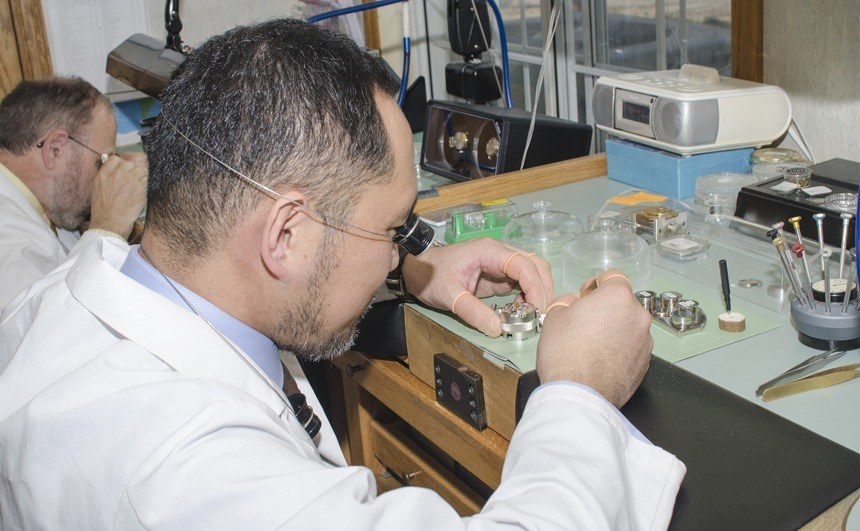
It would have been nice to have started the project in such a nice workshop, but in fact the beginnings were much more humble.
I should also mention to you that right around this time was when I enrolled in the Timezone series of courses, which I completed while also working my day job. Why did I do that? Because, again, the only way you can identify and pursue an opportunity is to know anything and everything there is to know about it. Going through this self-education made me appreciate further not just the aesthetic side of watches, but also exactly how they functioned and are put-together, which I knew was going to serve me well as the project progressed.


